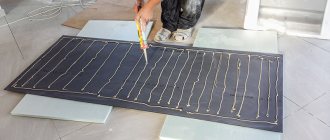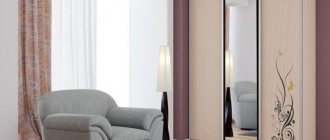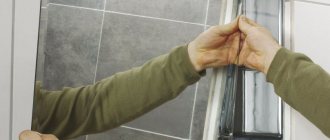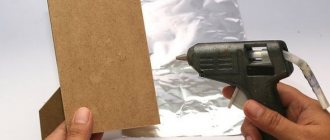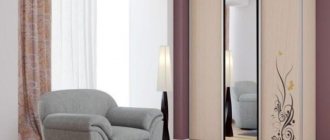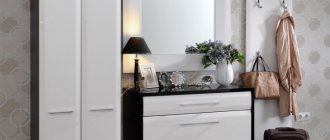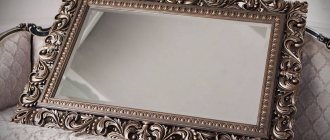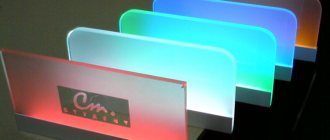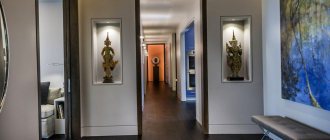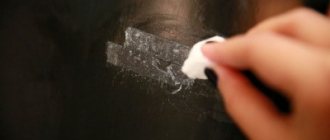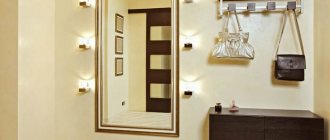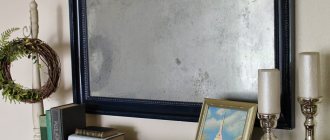A mirror makes a room cozy, lived-in, visually expands the space, and therefore is considered a necessary part of the interior. The variety of shapes, designs and frames of products leads to confusion when choosing. Once you decide on an option and bring it home, the question arises - in what place and how to hang the item. It is necessary to have an idea of what types of wall mirrors are mounted in order to provide for all the installation features. In this case, the size, weight of the canvas and many other factors should be taken into account.
What glue to use
Determine exactly the composition with which the mirror will be attached. For this use:
- liquid Nails;
- special glue for mirrors.
To install mirror panels, you must choose a special glue that does not contain components that damage the amalgam (mirror layer). The most popular and frequently used mirror adhesive is Bostik 2750MS. The advantage of this glue is that the wall under it does not need to be primed. The adhesive has good performance characteristics and adhesion and can be used for gluing various surfaces.
In addition to this glue, brands such as SOUDAL, Abro and Tytan have proven themselves well.
When installing a mirror on ceramic tiles in the bathroom, it is better to choose a polymer and moisture-resistant adhesive.
Installation requirements
You will have to hang a mirror without a frame once and for all (or until the next renovation), so you need to determine exactly where you will hang the product.
As mentioned above, it is not advisable to place a mirror in front of the window itself so that the sun's rays fall on it for a long time. Since hanging a mirror without a frame on the wall will take forever, this location should be carefully considered, otherwise it will be impossible to change its location without damaging the finish.
The second no less important point is the evenness of the base on which the product will be hung. The walls must be covered with finishing (wallpaper, paint, decorative plaster). Also, the surface should be as smooth as possible, without significant differences, so that the product can stick tightly to the base over its entire area.
Preparing the base
The base for the mirror can be concrete, tile, chipboard or a plastered wall. But still, plywood, chipboard or OSB are not recommended for gluing mirrors, since the wood in the composition does not tolerate changes in temperature and humidity well, it can “lead”, which can lead to the mirror peeling off.
The optimal base is a plastered or concrete wall. If there are roughness, cracks or unevenness on the wall, they must be eliminated using putty. Before gluing the mirror to the wall, it is first primed. Primer is an important stage in surface preparation and should not be skipped. It is the primer that protects the wall from moisture and condensation, and, therefore, from the appearance of mold and mildew.
What prevents you from mounting a mirror on the wall?
A mirror is one of the few items that can be attached to walls anywhere and in unlimited quantities. There is even a certain interior design style that uses a large number of mirror panels of different designs. If you correctly position and secure mirrors on the walls, you can significantly change the perception of the room and even visually expand the boundaries.
Most owners, after renovation, do not want to drill into the walls and spoil the newly hung wallpaper. Most often, they try to attach the mirror using adhesives; you just need to choose a good glue and solve the problem of how to clean the wallpaper from dust after repair.
But attaching mirror glass with glue is not as easy as it might seem at first glance. Most often, problems arise in the following situations:
- When trying to fix a mirror on recently pasted wallpaper. A small and relatively light mirror can stay on the wallpaper surface, but at the same time “pull” part of the wallpaper into an “accordion”. You cannot attach mirror glass directly to a fresh canvas, otherwise you will have to look for a way to remove wrinkles from the wallpaper after drying;
- In case the glass plate of the mirror needs to be attached to a water-based emulsion, latex, liquid wallpaper, drywall or a lime-whitened wall. None of the listed materials are friendly to glue and shear loads, so there is no point in trying to attach even a small mirror - the coating will peel off.
How to fix a mirror canvas without a frame with your own hands
Canvas without a frame can be secured in several ways:
- Glue. The working technique is the same as with mirrors with a frame: prepare the surface, level it, remove dust, make markings and install. This method is suitable for partially decorating a wall.
- Profile. The canvas is inserted into a metal profile. This makes it convenient to decorate large surfaces. Working technique: prepare the surface, install the profile, apply a silicone seal to the edge of the glass so that the mirror fits into the grooves more easily. The canvas is inserted and pressed to secure it. All other parts are installed by analogy.
